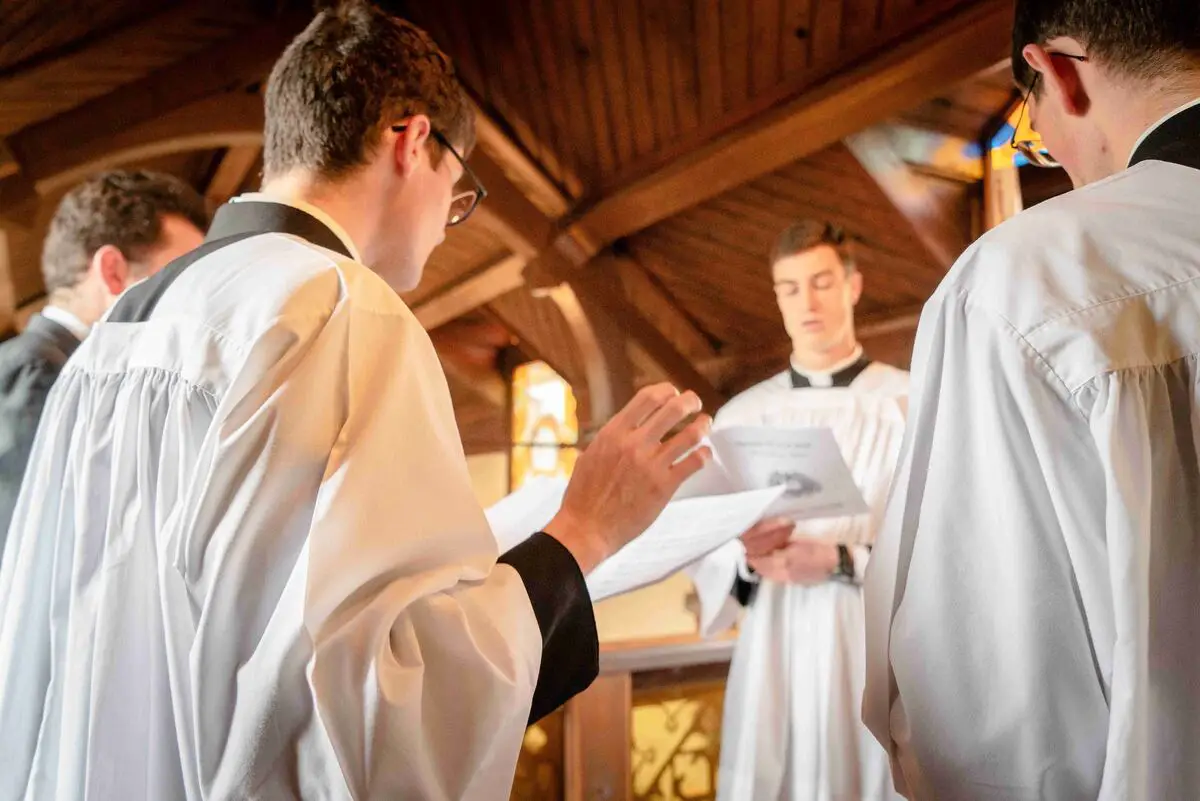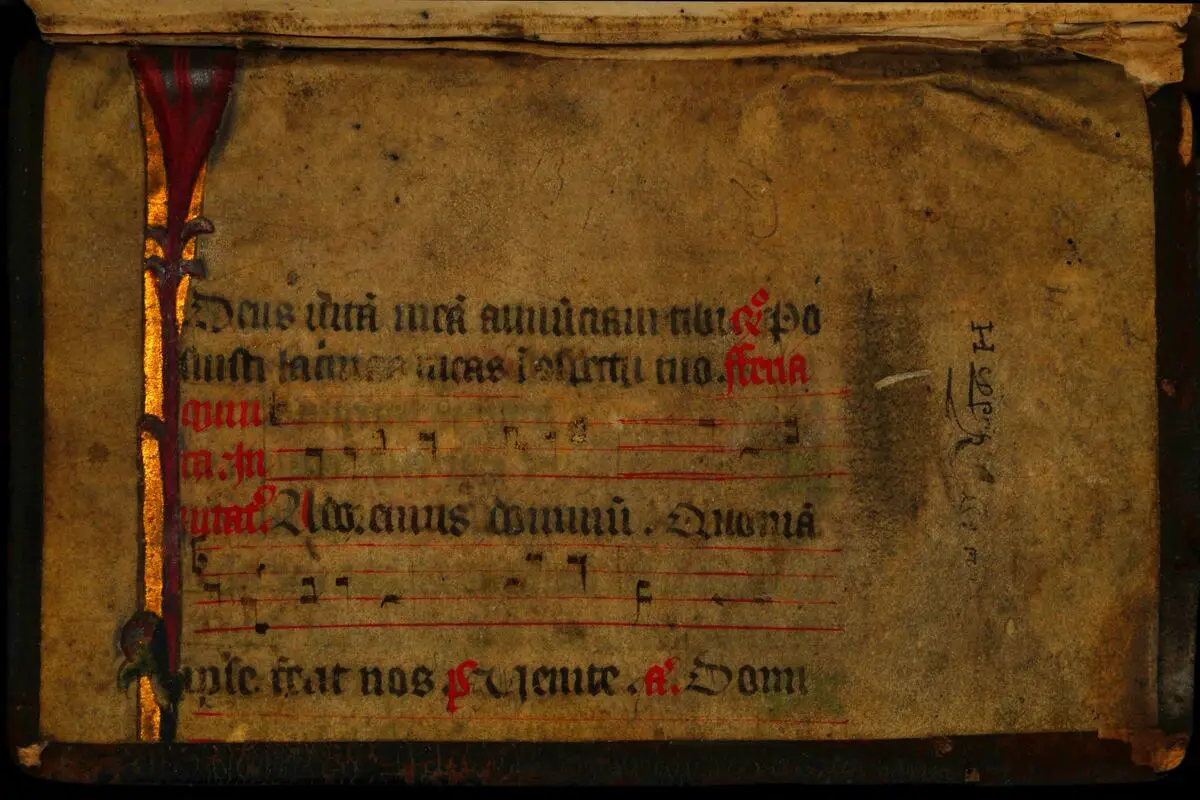In the silent cloisters of medieval monasteries, a profound and ethereal sound emerged, one that would echo through the centuries and leave an indelible mark on sacred music. This haunting and mesmerizing form of plainchant, known as the Gregorian Chant, not only became the musical bedrock of the Christian liturgy but also a timeless testament to the human spirit’s yearning for the divine. What makes it so captivating and timeless? Prepare to embark on a journey into the depths of this enchanting form of liturgical music.
What is Gregorian chant? It is a monophonic or unison style of liturgical music associated with the Roman Catholic Church, named after St. Gregory I, who collected and codified it during his papacy.
What is Gregorian chant?
Gregorian chant is a captivating form of liturgical music used in the Roman Catholic Church. Its distinctive qualities make it stand out among various musical traditions. The roots of Gregorian chant trace back to the time of St. Gregory I, who served as pope from 590 to 604. During his papacy, St. Gregory I collected and codified the chant, giving it its name.

This sacred music was intended to accompany the text of the mass and the canonical hours, creating a solemn and devotional atmosphere. One defining characteristic of Gregorian chant is its monophonic or unison texture. Unlike polyphonic music that features multiple melodic lines, Gregorian chant consists of a single melodic line sung in unison. This simplicity and purity allow the chant to convey a sense of reverence and contemplation.
AKAI Professional MPK Mini MK3

AKAI Professional MPK Mini MK3
What is the role of Gregorian chant in liturgical settings?
Gregorian chant serves as a powerful tool for worship and religious ceremonies. It accompanies various parts of the mass, such as the Kyrie, Gloria, Credo, Sanctus, and Agnus Dei. Each chant has its own unique melodic structure, reflecting the significance of the respective liturgical moment.
During the reign of Charlemagne, the king of the Franks from 768 to 814, Gregorian chant was imposed on his kingdom…
During the reign of Charlemagne, the king of the Franks from 768 to 814, Gregorian chant was imposed on his kingdom, where another liturgical tradition called Gallican chant was prevalent. Over time, a process of assimilation occurred, resulting in an evolved form of chant that combines elements from both traditions. This assimilation solidified Gregorian chant as the dominant liturgical music in Western Christianity.
What are the different chants in the Ordinary of the Mass?
The Ordinary of the Mass comprises specific texts that remain the same for each celebration of the Eucharist. Gregorian chant plays a vital role in enriching these elements, each with its own unique characteristics and style. Let’s dive into the different chants found in the Ordinary of the Mass.

- Kyrie: The Kyrie chant, a prayer for mercy, holds a prominent place in the Ordinary of the Mass. It ranges in style from neumatic, with patterns of one to four notes per syllable, to melismatic, featuring unlimited notes per syllable. This variation in style allows the chant to evoke different moods and intensities, enhancing the emotional depth of the prayer.
- Gloria: The Gloria, a hymn of praise, appeared in the 7th century. Early Glorias were characterized by psalmodic recitation, using simple formulas known as psalm tones. As time passed, the chant evolved, incorporating neumatic melodies. These intricate melodies, adorned with melodic flourishes, express the jubilant and celebratory nature of the text.
- Credo: The Credo, a statement of faith, found its way into the mass around the 11th century. The melodies used in the Credo exhibit similarities to psalm tones, providing a sense of familiarity and continuity within the liturgy. Through the chant’s melodic contours and expressive nuances, the Credo invites the faithful to proclaim their beliefs with devotion and conviction.
- Sanctus and Benedictus: The Sanctus, a hymn of praise, and the Benedictus, which accompanies the Eucharistic prayer, possess a profound sense of sacredness. The usual Sanctus chants feature neumatic melodies that convey reverence and awe. These chants likely have roots in apostolic times, connecting contemporary worshipers to the early Christian tradition.
- Agnus Dei: The Agnus Dei, a chant based on a text originating from the Eastern Church, was introduced to the Latin mass in the 7th century. It carries a predominantly neumatic style, allowing the chant to unfold gently and expressively. The Agnus Dei creates a contemplative atmosphere, emphasizing the theme of seeking mercy and peace.
- Ite Missa Est and Benedicamus Domino: As the Mass concludes, the Ite Missa Est or Benedicamus Domino chants often employ the same melody used in the opening Kyrie, creating a musical bookend effect. This connection unifies the liturgical journey, reminding the congregation of the cyclical nature of worship and the importance of communal participation.
What is the significance of Gregorian chant in the canonical hours?
The canonical hours, also known as the Divine Office, consist of eight prayer services observed throughout the day by religious communities and clergy. Gregorian chant plays a central role in these services, enriching the liturgical experience.
- Matins, Lauds, and Prime: The canonical hours begin with Matins, the night office, followed by Lauds, the morning office, and Prime, the first hour of daylight. During these services, Gregorian chant accompanies the recitation of psalms. Antiphons, short refrains, are sung before or after the psalms, creating a call-and-response-like structure. The chant’s melodic simplicity allows the psalms to be proclaimed clearly and enhances their devotional impact.
- Terce, Sext, and None: Terce, Sext, and None are the mid-morning, noon, and mid-afternoon prayer services, respectively. Gregorian chant lends a meditative quality to these moments of reflection and supplication. Chants used in these hours are often syllabic, with clear melodic lines that facilitate communal singing and contemplation.
- Vespers: Vespers, the evening prayer service, presents a rich tapestry of Gregorian chant. Hymns, typically metrical and set in strophes or stanzas, express praise and thanksgiving. Responsories, consisting of a response, a psalm verse, and a repeated response, follow the lessons and readings of Vespers. The chant’s structure and style allow for expressive interpretations and convey the profound spiritual essence of the texts.
- Compline: Compline, the final service of the day, focuses on peace and rest. Gregorian chant in Compline evokes a sense of tranquility and surrender. The chant’s neumatic style, characterized by melodic fluidity, enhances the soothing ambiance, allowing participants to find solace and spiritual contemplation before sleep.
Who were the famous composers of Gregorian chant?
Gregorian chant, by its nature and origins, is mostly anonymous. While many of the chants were composed by anonymous monks and clerics over the centuries, there were some notable figures in the medieval period who made significant contributions to music theory, notation, and composition, some of which impacted or intersected with the Gregorian tradition. A few of these figures include:
- Guido of Arezzo (c. 991 – after 1033): Although not a composer of chants per se, he was a music theorist who invented the musical staff and the “do-re-mi” solmization system. His contributions greatly influenced the way chants were notated and taught.
- Hildegard of Bingen (1098-1179): A Benedictine abbess, writer, and composer. Hildegard composed many liturgical songs, and while they are not Gregorian chants in the strictest sense, they share some stylistic similarities.
- Notker Balbulus (c. 840 – 912): A monk from the Abbey of Saint Gall, known for his sequences, a type of liturgical chant.
- Perotin and Leonin: Both were associated with the Notre Dame school in Paris in the 12th and early 13th centuries. They were early composers of polyphony, which was a significant departure from the monophonic Gregorian chant but showcased the evolution of musical styles during the medieval period.
If you want even more great tips and information, check out the video below.
Frequently Asked Questions (FAQ)
Got more questions about Gregorian chant? Check out these commonly asked questions and their answers.
How can I learn to sing Gregorian chant?
Learning to sing Gregorian chant requires patience, practice, and guidance. Start by familiarizing yourself with the basics of chant notation and understanding the different chant styles. Seek out resources such as books, online tutorials, or even local workshops led by experienced chant practitioners. It’s also helpful to listen to recordings of Gregorian chant to internalize the melodic patterns and phrasing.
How is Gregorian Chant different from other types of chant?
There are various forms of plainchant, such as Old Roman, Ambrosian, and Mozarabic, among others. Gregorian chant stands out for its specific set of eight church modes (scales) and its unique melodic style. Additionally, while other chants might be regional (like the Ambrosian chant of Milan), Gregorian chant became the standard throughout the Roman Catholic Church due to its codification and the widespread adoption of the liturgical books associated with it.
Why is Gregorian chant usually sung without accompaniment?
The unaccompanied nature of Gregorian chant reflects its primary purpose: to serve as a musical setting for the sacred liturgy, focusing on the text and its spiritual message. The chant’s simplicity, without the distraction of instruments, allows the listeners to concentrate on the sacred words, heightening their prayerful and meditative experience. Historically, instruments were not commonly used in early Christian worship, leading to a tradition of a cappella singing in religious settings.
Conclusion
We’ve journeyed through the enchanting world of Gregorian chant, uncovering its rich history, unique characteristics, and its potential for modern music production. From the solemnity of the Mass to the depths of the canonical hours, Gregorian chant has stood the test of time, captivating hearts and inspiring generations.
Did I cover everything you wanted to know? Let me know in the comments section below (I read and reply to every comment). If you found this article helpful, share it with a friend, and check out my full blog for more tips and tricks on exploring the mesmerizing realms of Gregorian chant. Thanks for reading and may your music soar to heavenly heights!
Key Takeaways
This article covered the topic of Gregorian chant, exploring its history, styles, and significance. Here are some key takeaways:
- Gregorian chant is a monophonic liturgical music tradition of the Roman Catholic Church.
- It originated during the papacy of St. Gregory I and went through an assimilation process with Gallican chant.
- The chant is structured around the Ordinary and Proper of the Mass, as well as the canonical hours.
- Incorporating Gregorian chant can add spirituality, historical depth, and a unique aesthetic to modern music.















